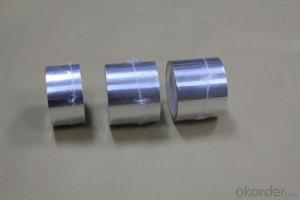Thin Masking Tape: Precision Applications and More
Precision is key in many areas of life, from the meticulous brushstrokes of an artist to the careful measurements of a scientist. But what about the everyday tasks that require a bit of finesse? That’s where thin masking tape comes into play. This versatile tool is more than just a simple strip of adhesive; it’s a helper in various creative and practical applications.
The Art of Taping: A Personal Touch
Masking tape isn’t just for the professionals. It’s a friend to DIY enthusiasts, crafters, and anyone looking to add a personal touch to their projects. Whether you’re painting a room and want to protect the trim or creating a unique design on a piece of furniture, thin masking tape can be your go-to for clean lines and a polished finish.
A Tape for All Seasons: Versatility at Its Best
One of the best things about thin masking tape is its versatility. It’s not just for indoor projects. This tape can handle outdoor applications, too. From spiffing up a car to giving a bike a new look, thin masking tape can withstand various weather conditions, ensuring your project stays intact and looking sharp.
The Science Behind the Stick: Adhesion and More
But what makes this tape so special? It’s all about the adhesive. The thin masking tape is designed with a light adhesive that sticks well but doesn’t leave a residue when removed. This feature is perfect for surfaces you want to protect, like your car’s paint job or that antique dresser you’re refurbishing.
A Palette for Precision: Colors and Patterns
Gone are the days of just yellow and blue masking tapes. Now, you can find thin masking tapes in a variety of colors and patterns. This allows for more creative freedom and the ability to match your tape to your project or even use it as a decorative element in itself.
The Edge of Perfection: Tips for Using Thin Masking Tape
Using thin masking tape isn’t just about slapping it on and calling it a day. To get the most out of your tape, follow these tips:
– Clean Surfaces: Ensure the surface is clean and free of dust or debris for the best adhesion.
– Apply with Care: Press firmly and smooth out any wrinkles or bubbles as you apply the tape.
– Cut to Size: Don’t be afraid to cut the tape to fit your specific needs.
– Peel Slowly: When it’s time to remove the tape, do so slowly and at a 45-degree angle to avoid damage to the surface.
When to Say Goodbye: Knowing When to Replace Your Tape
Like all good things, thin masking tape has its limits. Over time, the adhesive can weaken, and the tape may lose its stick. Here are some signs it’s time to replace your tape:
– It doesn’t stick well to surfaces.
– It leaves residue when removed.
– The tape itself is damaged or torn.
A World of Possibilities: Projects to Try with Thin Masking Tape
Now that you know the ins and outs of thin masking tape, it’s time to get creative. Here are a few project ideas to get you started:
– Stenciling on Walls: Use the tape to create geometric patterns or block letters for a bold statement.
– Furniture Makeovers: Give old furniture a new lease on life with creative tape designs.
– Car Detailing: Protect areas of your car during detailing to avoid overspray or scratches.
– Garden Art: Use the tape to create temporary designs on pottery or garden decorations.
– Temporary Tattoos: For a fun party activity, create temporary tattoos using thin masking tape and paint.
The Final Word on Thin Masking Tape
In conclusion, thin masking tape is more than just an adhesive strip. It’s a tool for creativity, a protector of surfaces, and a helper in precision work. With the right application and care, this humble tape can elevate your projects to new heights. So, the next time you’re tackling a task that requires a bit of finesse, don’t underestimate the power of a simple strip of thin masking tape.

